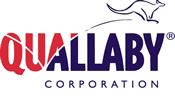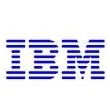TNPM/History
Contents
Tivoli Netcool Performance Manager History
Some of this background is provided by the Way Back Machine http://web.archive.org
1995
*Quallaby Corp. founded in France*
1997
*Quallaby moves its headquarters to Massachusetts*
1999
*Quallaby ships the first public release of its flagship product Proviso v1.0*
Quallaby Corporation, a global provider of network and service management software, today announced the availability of PROVISO 1.0, a Service Level Management (SLM) solution that allows Service Providers to dynamically tailor SLA's to their customers changing requirements. PROVISO's shipping comes on the heels of the recently announced OEM agreement with Cross Keys Corporation
2000
*12st Nov Quallaby Ships Proviso 2.1*
2003
*Quallaby ships Proviso v3*
It contains most of the look and feel and management tools it will have for the next 10 years. Support for upto 64 SNMP dataloads
PROVISO is carrier-class performance monitoring and service assurance software architected for the next generation network needs of service providers. PROVISO is built on the Sun Solaris platform with Oracle database support - the platform of choice for mission-critical network environments.
PROVISO collects, imports, aggregates, and stores more than three billing periods of network performance and QoS data in an Oracle-based data mart, integrating it with data from other components of a service provider's operations support system (OSS). The integration allows network performance to be associated to customer, service, and service level information for faster provisioning, proactively managing tiered SLAs, proactive troubleshooting, and enriched billing.
PROVISO provides on-demand network reports via a secure Web portal optimized for viewing by three critical audiences of an NSP: network operations to tune the network; subscribers to verify their SLA performance on-line; and business development to grow the business.
*Proviso v4.1*
2004
*Proviso v4.2*
2005
*June ~~ Micromuse acquires Quallaby*
Micromuse announced it would acquire Quallaby (For 33M $US) and incorporate its performance management software, Proviso, into Muse's flagship Netcool fault management software suite.
For now, the benefactors of this deal would be mostly large service providers, which are already Quallaby and Micromuse customers, but Micromuse says ultimately the integration of fault and performance management will trickle down to help the IT managers at enterprise companies as well. Micromuse, which also recently announced its foray into IT service management says the two IT disciplines, fault and performance management, cannot mutually co-exist in enterprise IT shops so therefore the company plans to deliver on its promises of speedy product integration.
Note: there are no major changes to the product during Micromuses ownership, Micromuse branding is added, but alot of the tools still have the Quallaby branding.
2006
*IBM acquires Micromuse*
IBM Corp. has agreed to buy network management software vendor Micromuse Inc. for US$865 million in cash.
IBM said the move would allow it to offer its customers better technology for dealing with increasingly mixed traffic in their networks produced by VOIP (voice over Internet Protocol) and other online voice and video services.
IBM plans to add Micromuse's technology to its line-up of Tivoli management software to help companies better manage services such as videoconferencing for remote workers or streamed music for cell phone customers, it said.
2007
*Proviso 4.4.1*
Still retains all the Micromuse branding
2008
*Proviso 4.4.3*
Proviso has been 'blue washed'. All traces (apart from comments in the code) have been removed of the previous companies / corporations that had been involved before IBM.
All the dc.cfg, dataload.cfg text files which reside on each host about each component are removed and replaced with the universally hated, Toplogy editor. A Eclipse/Java based GUI for editing the entire installation. Works OK in a testing / POC environment, totally useless on a large installation [must be run from a Solaris server, with java netbeans rendered windows displayed over x-windows. Customers find way to port this to Windows as IBM are unwilling to add the -win32 compiler flags when compiling.
Centralised deployer is added, again java rendered windows displayed over x, nice in theory but on a distributed system its proving to be hard to use / do large upgrades with minimal outage due to its serial deployment method of operation
AIX suppoer for all but the Dataview (which runs on the now unsupported Novell Silverstream Portal)
Redhat Linux SNMP dataloads are now supported.
2010
*IBM Releaess the infamous Proviso 5.0 for Telecom South Africa*
Its a custom build, rumoured to be quite buggy, but it leads the way for 5.1 (upgrade path for older installations)
- IBM beings to rebrand Proviso as TNPM Wireline, version numbers (on paper) are changed
- Proviso 4.4.3 becomes part of TNPM 1.2
- Proviso 5.1 becomes TNPM 1.3
Informative, on-demand reports help improve service quality and reduce operating costs. Its flexibility and scalability are proven in service provider deployments, particularly with next generation IP network and OSS consolidation, enabling them to provide value-added reports to their customers.
2012
*TNPM 1.3.2*
Tivoli Netcool Performance Manager - Wireline (wireless component aka Valent is given away free with each licence)
- Front end uses IBM TIP 2.2 (Tivoli Integrated Portal) - replaces the Silverstream Webserver which hasnt been supported by Novell since 2008
- MDE - Mass Data Export - ability to extact data from the TNPM database for 3rd parties and export data to the seperate Cognos Database
- Cognos Database - ability for users to run ad-hoc reporting
- Tivili Common Reporting 2.1.1- Reports from the Cognos database available in the TIP Portal.
- Composite Subelements - Ability to do SLA calculations from several related objects (appears to be very combersome to implement)
- Oracle 11G (11.2.0.2) Support
- Ability to install on Solaris, AIX or Redhat
2013
*TNPM 1.3.3*
Same as above except that it only support DB2


